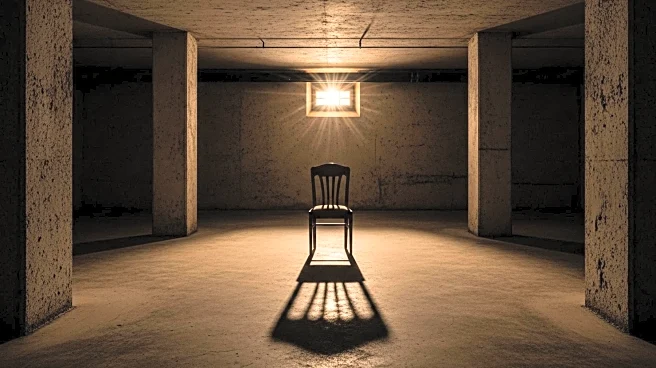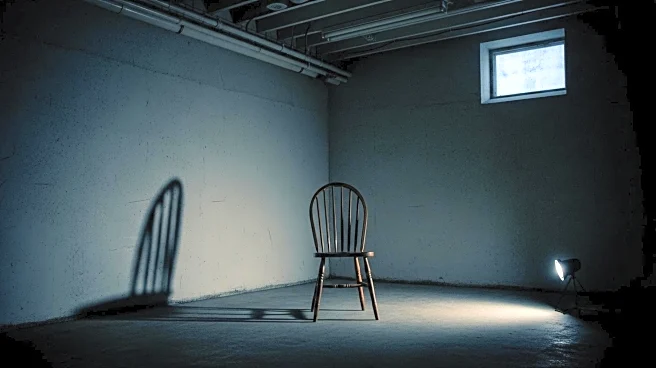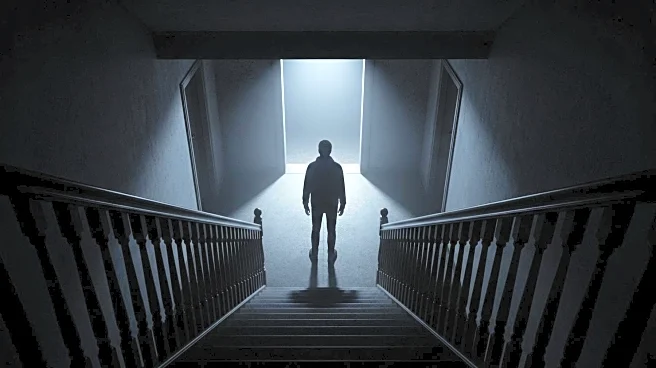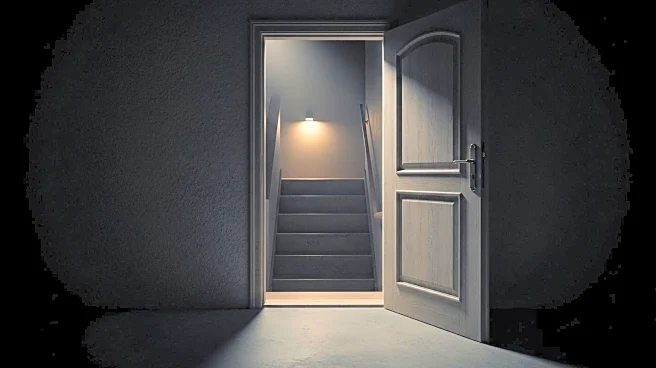What's Happening?
The film 'The Man in My Basement', directed by Nadia Latif and adapted from Walter Mosley's novel, stars Corey Hawkins and Willem Dafoe. Set in the 1990s in Sag Harbor, the story follows Charles Blakey, played by Hawkins, who is financially destitute after losing his bank job due to embezzlement. His life changes when Anniston Bennett, portrayed by Dafoe, offers to rent Charles' basement for 65 days for $65,000. The film explores themes of power dynamics, race relations, and redemption, as Charles discovers Bennett locked himself in a cage in the basement. The film is noted for its powerful performances and intellectual themes, though it struggles to make all its ideas coherent.
Why It's Important?
The film's exploration of complex themes such as colonialism, guilt, and redemption offers viewers a thought-provoking experience. It challenges audiences to consider the deeper implications of power dynamics and race relations, making it a significant cultural piece. The performances by Hawkins and Dafoe add depth to the narrative, engaging viewers in a dialogue about societal issues. The film's release at the Toronto International Film Festival and its subsequent streaming on Hulu highlight its potential impact on discussions around these themes.
Beyond the Headlines
The film's allegorical storyline raises questions about the dehumanizing effects of colonization and the search for redemption. It invites viewers to reflect on historical injustices and their lingering impact on contemporary society. The narrative's focus on a Black man and a white man in a basement setting serves as a metaphor for broader societal dynamics, prompting discussions on race and power. Despite its challenges in coherence, the film's intellectual ambition makes it a noteworthy addition to cultural discourse.











